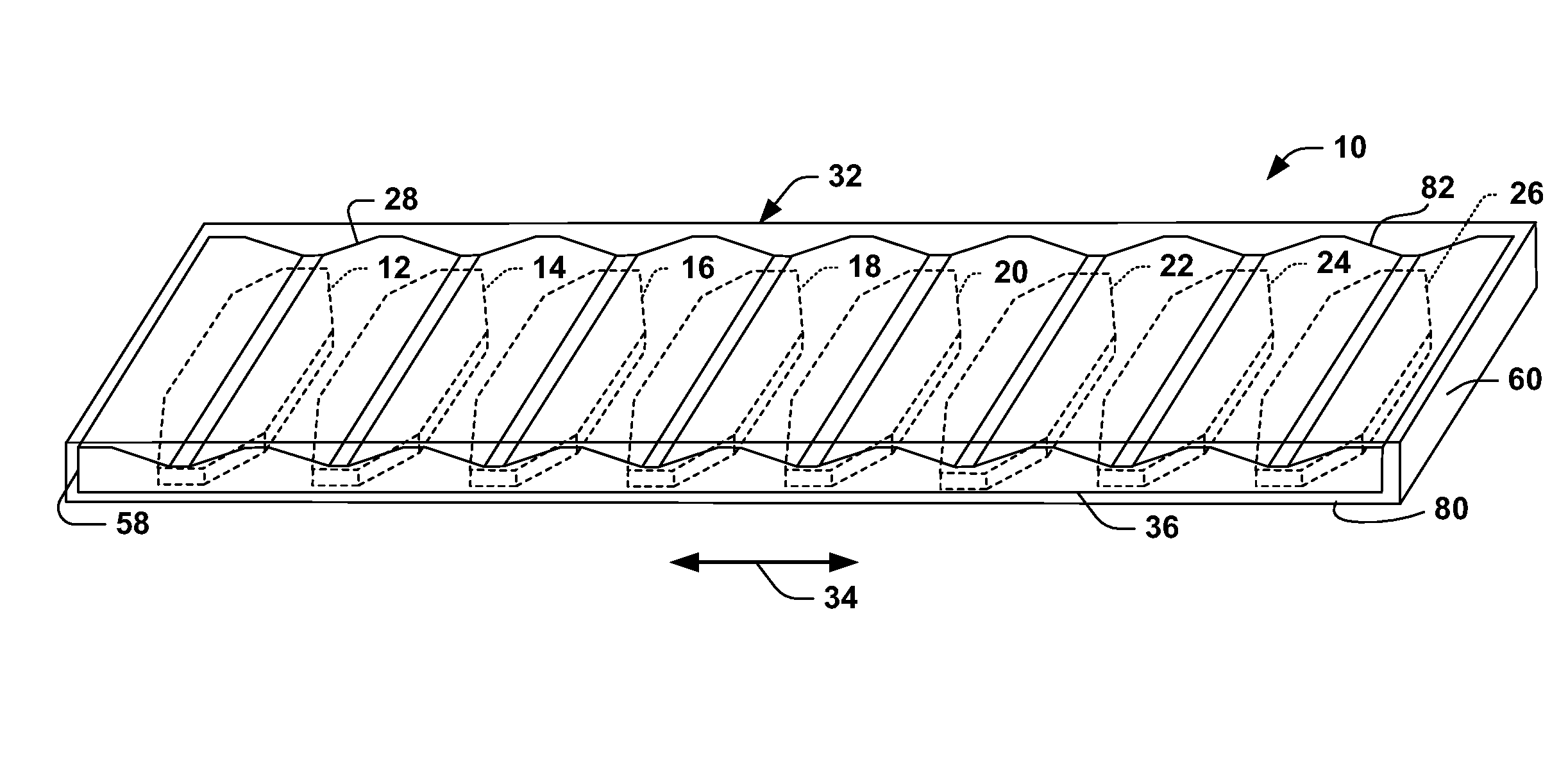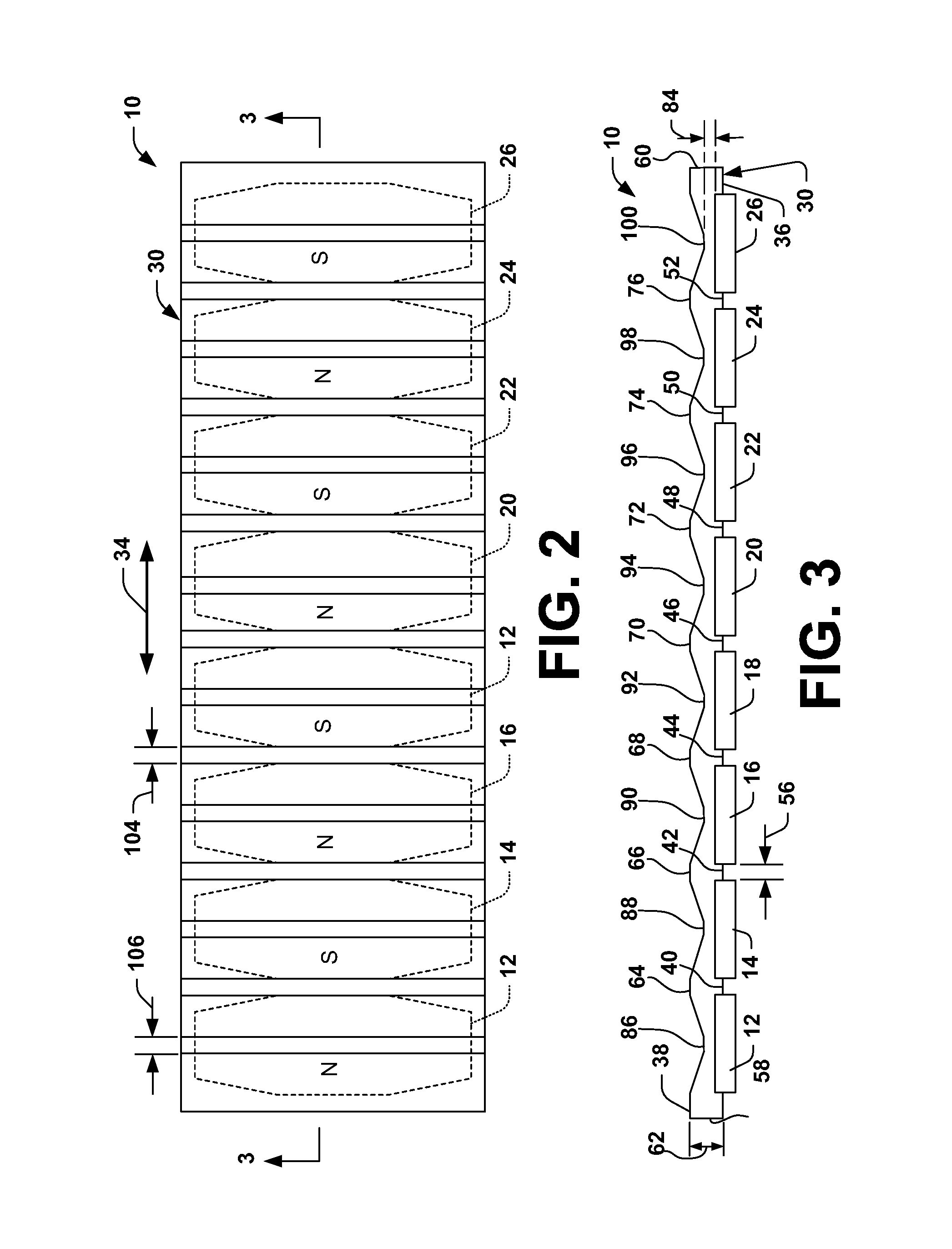High performance motor and magnet assembly therefor
a magnet assembly and high-performance technology, applied in the field of motors, can solve the problems of increasing the overall weight and size of the stage, size and weight, and increasing the force output to moving mass ratio of the motor incorporating the magnet assembly, and achieves the effect of reducing leakage flux, high performance, and improving the force output to moving mass ratio of the motor
- Summary
- Abstract
- Description
- Claims
- Application Information
AI Technical Summary
Benefits of technology
Problems solved by technology
Method used
Image
Examples
Embodiment Construction
[0028]The present invention provides a magnet assembly for use in a linear motor. The magnet assembly includes a back iron and an array of magnets. The back iron is in the form of a plate having opposed surfaces of the back iron. The magnets are arranged in a generally linear array along one of the surfaces. The other surface of the back iron plate is dimensioned and configured according to the magnetic field distribution and / or localized regions of saturation associated with the motor geometry / topology. For example, the surface of the back iron plate opposite to which the magnets are attached can be scalloped, such that a dimension between the opposed surfaces at locations generally aligned with the magnet centers is less than a dimension between the opposed surfaces at locations between adjacent magnets.
[0029]Additionally, the subject invention can be employed in conjunction with a rotary motor, a platen and forcer arrangement, and / or any other suitable arrangement in which the va...
PUM
 Login to View More
Login to View More Abstract
Description
Claims
Application Information
 Login to View More
Login to View More - R&D
- Intellectual Property
- Life Sciences
- Materials
- Tech Scout
- Unparalleled Data Quality
- Higher Quality Content
- 60% Fewer Hallucinations
Browse by: Latest US Patents, China's latest patents, Technical Efficacy Thesaurus, Application Domain, Technology Topic, Popular Technical Reports.
© 2025 PatSnap. All rights reserved.Legal|Privacy policy|Modern Slavery Act Transparency Statement|Sitemap|About US| Contact US: help@patsnap.com



